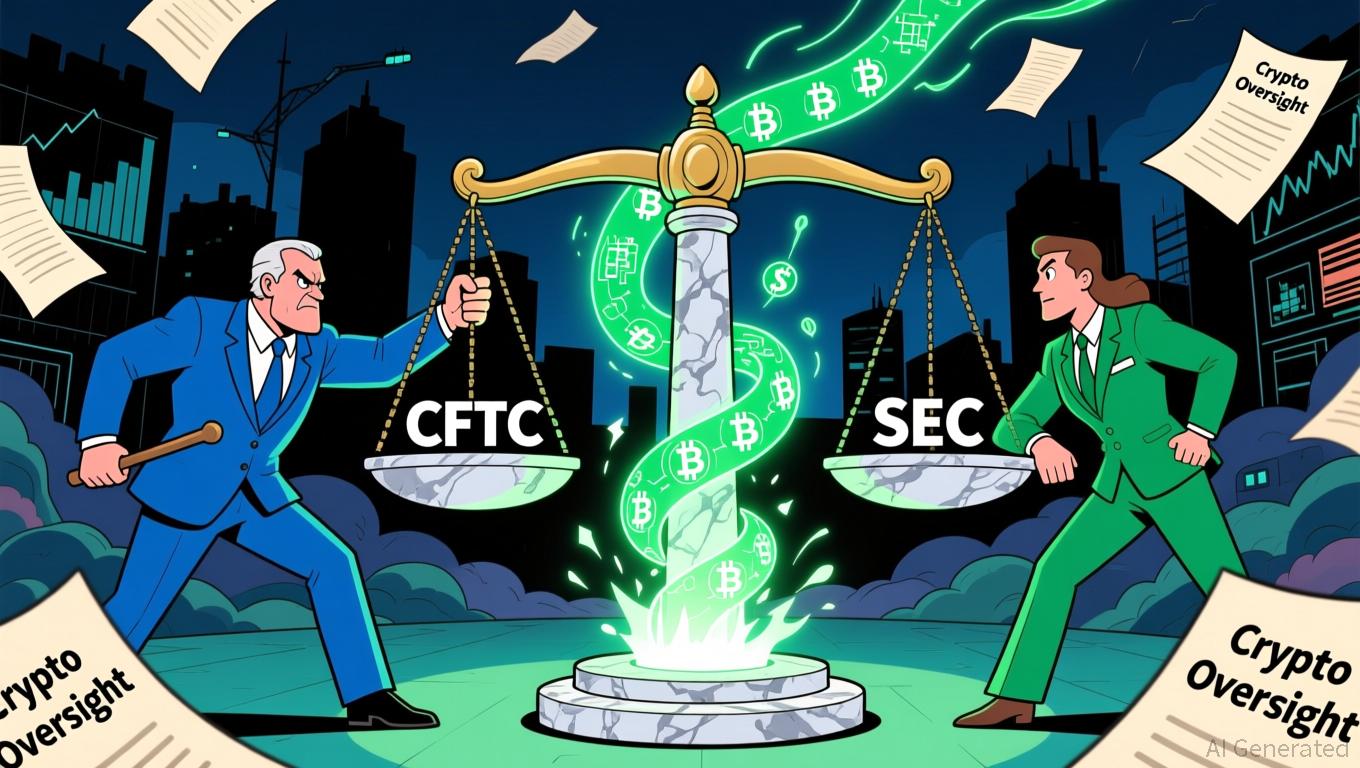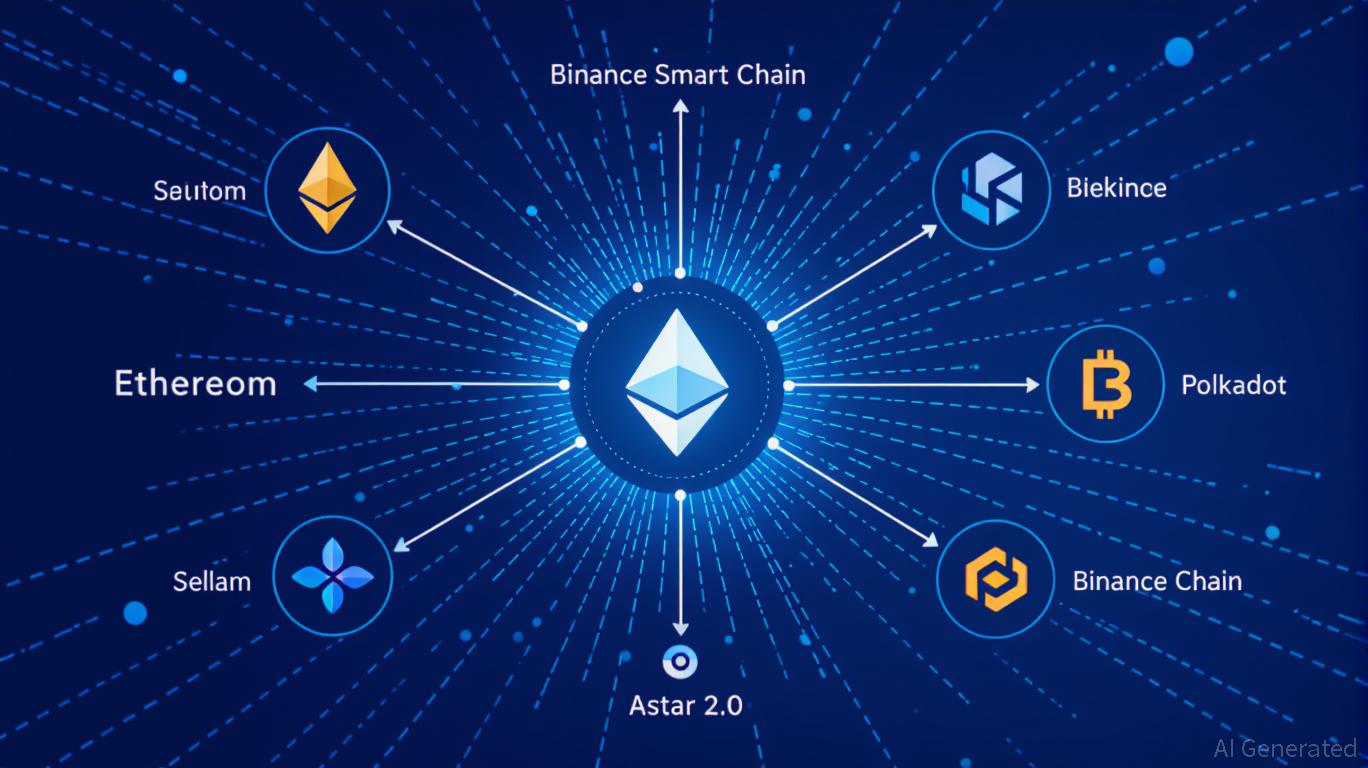Bitcoin’s Sharp Decline: Uncovering the Causes Behind the 2025 BTC Collapse
- The 2025 Bitcoin crash below $100,000 stemmed from DeFi vulnerabilities and the Fed's restrictive policies, creating systemic market panic. - Elixir deUSD's collapse—triggered by Stream Finance's $93M loss—exposed DeFi's fragility, causing $200M TVL losses and eroding stablecoin trust. - The Fed's hawkish stance (3% inflation target) and liquidity hoarding worsened cash shortages, amplifying Bitcoin's volatility amid delayed economic data. - Investors now prioritize DeFi risk mitigation and macro hedging
The DeFi Domino: Elixir deUSD's Collapse
The Elixir deUSD stablecoin, which was intended to keep a 1:1 value with the U.S. dollar, collapsed in late 2025 after Stream Finance—a key borrower and liquidity provider—suffered a $93 million loss in trading. Stream had used deUSD as collateral for speculative trades, but as asset values plunged, widespread liquidations depleted Elixir’s reserves, leading to a suspension of redemptions. In just a few hours, deUSD’s price
This event exposed the instability of synthetic asset frameworks and the tight interconnections among DeFi protocols. Elixir’s disclosure that Stream held 90% of deUSD’s supply and declined to settle its debts highlighted the dangers of excessive concentration. As one blockchain analyst observed, "

The Fed's Hawkish Pivot: A Macro Tailwind for Volatility
While the weaknesses in DeFi set the
This firm stance, along with delayed economic reports due to a government shutdown, created uncertainty. Banks began to stockpile liquidity, borrowing a record $50.35 billion from the Fed’s Standing Repo Facility in a single day—an indicator of tightening cash conditions. The Fed’s ongoing quantitative tightening (QT) and large Treasury auctions further strained liquidity, increasing volatility in assets like Bitcoin.
The Perfect Storm: Sentiment and Spillovers
The combination of DeFi’s unraveling and the Fed’s policies fueled a cycle of fear. As deUSD lost its peg, Bitcoin’s value
Wider economic sentiment deteriorated as companies like Metaplanet saw their Bitcoin holdings fall underwater,
Implications for Investors
For those investing, the 2025 crash highlights the importance of caution in two key areas:
1. Managing DeFi Risks: The deUSD failure demonstrates the perils of excessive leverage and unclear collateral arrangements. Investors should focus on platforms with diversified reserves and open governance.
2. Macro Hedging: With the Fed maintaining a tough stance, it’s crucial to reassess risk assets. The growing correlation between Bitcoin and equities suggests it may no longer act as an independent hedge against traditional market swings
Conclusion
The 2025 Bitcoin crash was not an isolated incident but rather a reflection of deeper structural problems. The Elixir deUSD debacle revealed weaknesses in DeFi’s design, while the Fed’s strict policies heightened broader economic vulnerabilities. For investors, the takeaway is unmistakable: in today’s interconnected markets, diversification and robust risk controls are essential, not optional.
Disclaimer: The content of this article solely reflects the author's opinion and does not represent the platform in any capacity. This article is not intended to serve as a reference for making investment decisions.
You may also like
Bitcoin News Update: CFTC's Broader Role in Crypto Regulation Ignites Discussion on Clearer Rules
- U.S. lawmakers propose expanding CFTC's crypto oversight via a bill reclassifying spot trading, diverging from SEC's enforcement approach. - Harvard University invests $443M in BlackRock's IBIT ETF, reflecting institutional confidence in crypto as a legitimate asset class. - DeFi projects like Mutuum Finance raise $18.7M in presales, leveraging regulatory momentum and transparent on-chain credit systems. - RockToken's infrastructure-backed crypto contracts attract long-term investors with structured yiel

DASH Aster DEX's Latest On-Chain Growth and What It Means for DeFi Liquidity
- DASH Aster DEX leads 2025 DeFi shift with hybrid AMM-CEX model and multi-chain support (BNB, Ethereum , Solana), boosting TVL to $1.399B and Q3 daily trading volumes of $27.7B. - Platform's 1,650% ASTER token price surge post-TGE attracted 330,000 new wallets, with 94% of BSC-USD volume ($2B/day) driving institutional adoption via Binance/YZi partnerships. - ASTER token mechanics enable 80% margin trading, 5-7% staking rewards, and governance rights, while annual 5-7% fee burns create scarcity and align

Astar 2.0: Leading a New Generation of DeFi and Cross-Chain Advancements
- Astar 2.0 introduces a zkEVM mainnet and cross-chain interoperability, slashing gas fees and enabling 150,000 TPS with 2025 scalability goals. - Strategic partnerships with Mazda, Japan Airlines, and Sony demonstrate blockchain's real-world applications in logistics, loyalty programs, and digital asset tokenization. - Q3 2025 data shows $2.38M DeFi TVL growth and 20% active wallet increase, alongside a $3.16M institutional ASTR token acquisition. - The platform aims to solidify its role as a foundational

Aster DEX Introduces New On-Ramp: Transforming Retail Participation in DeFi
- Aster DEX integrates institutional-grade custody and privacy tech (zero-knowledge proofs) to bridge retail-institutional DeFi gaps via BNB Chain partnerships. - TVL surged to $2.18B by late 2025 through yield-bearing stablecoins and hidden orders, attracting both retail and institutional liquidity. - Despite compliance gaps and wash trading concerns, Aster's Binance alignment and Coinbase listing signals growing institutional validation.
